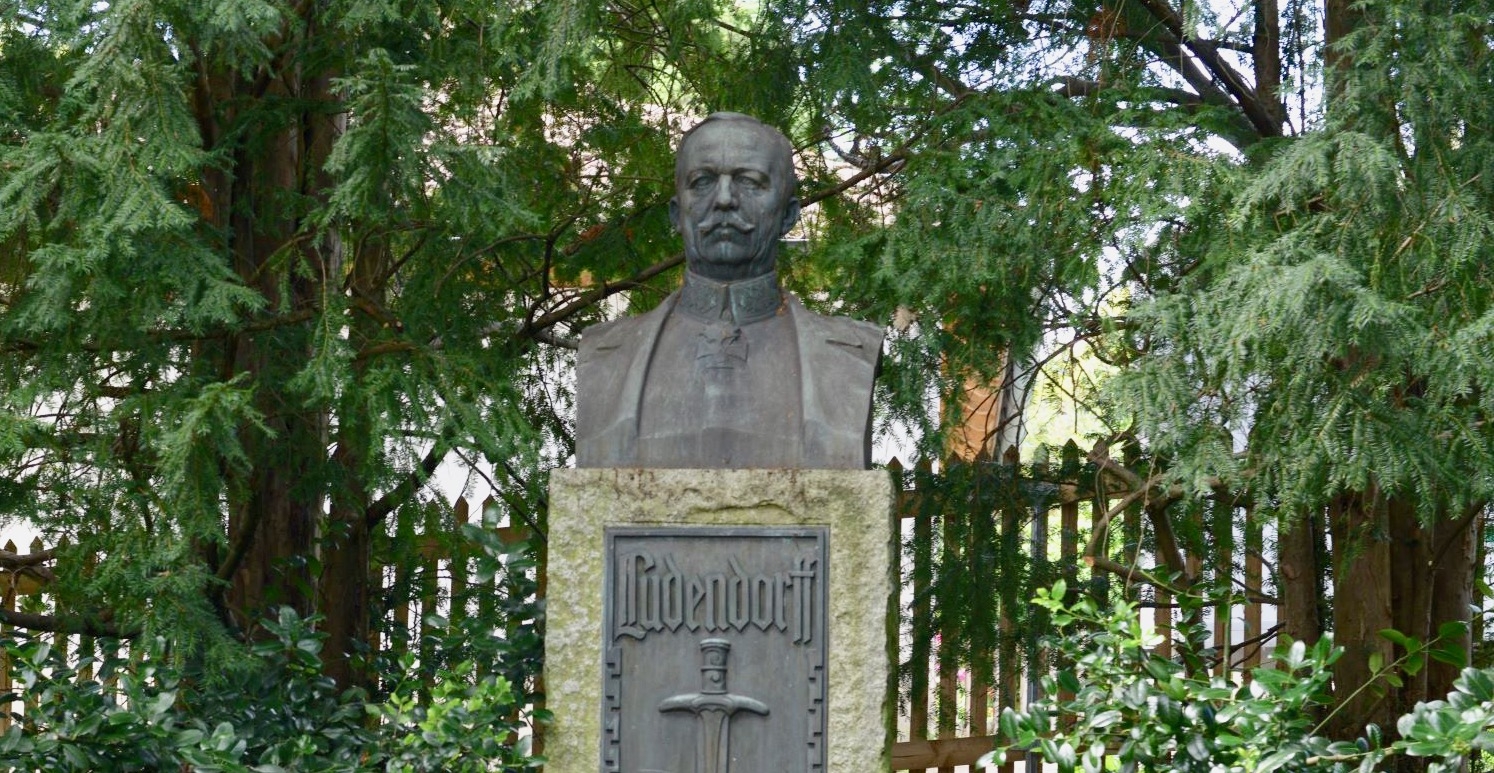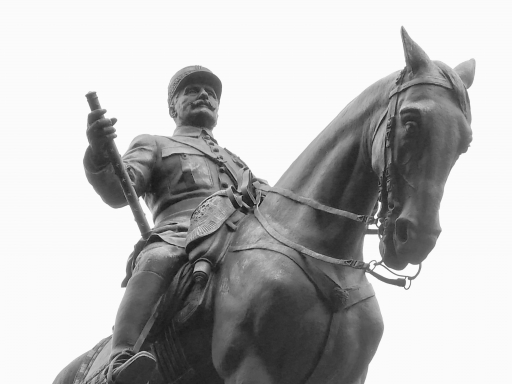In the dying days of September 1918, an Allied onslaught in Northern France and Flanders, coupled with defeats for the Central Powers in the Balkans and Middle East, forced the German High Command to make overtures for an armistice.
Multiple attacks, conceived by Marshal Ferdinand Foch, put the German armies under pressure along the Western Front from Verdun to Ypres. The defences were formidable, in places making use of existing canals as additional barriers, but this time they were breached.
The two men who’d dominated Germany’s war effort since 1916, Field Marshal Paul von Hindenburg, and General Erich Ludendorff, agreed to call for a ceasefire.
 Erich Ludendorff’s grave in Tutzing, Bavaria (Photo © Susi Traenkner)
Erich Ludendorff’s grave in Tutzing, Bavaria (Photo © Susi Traenkner)
Here’s a look at some of the key events of a decisive week in the history of the First World War.
September 26
US and French troops delivered the first blow in the Meuse-Argonne region, with the aim of pushing forward to capture the railway hub of Sedan, cutting German supply lines. The Americans arrived fresh from their victory at St Mihiel. But the fighting in the rugged woodlands of the Argonne was tough, becoming the biggest offensive in US military history. The forest was cleared, and Sedan captured, by the time of the Armistice in November.
September 27
Canadian troops spearheaded a British drive towards Cambrai, crossing the Canal du Nord. The operation was carried out in a dry section of the canal, which had been under construction when war broke out in 1914. Nevertheless, it was still extremely hazardous, requiring the Canadians to push through on a narrow front and then fan out. Its success is credited to the rigorous planning of the the Canadian Corps commander, General Sir Arthur Currie.
September 28
The Allied armies struck next in Flanders, breaking out of the Ypres salient after four years of deadlock. They fought under the command of King Albert I of Belgium who’d led his country’s resistance to the German occupation from a pocket of territory on the North Sea coast. Passchendaele ridge, evacuated during Germany’s Spring Offensive in April, was recaptured. Allied forces advanced as far in a day as they had in three months during the Third Battle of Ypres in 1917.
September 29
 The Bellicourt, or Riqueval, Tunnel – attacked by Australian troops with US support – served as an extensive German bunker on the Hindenburg Line (Photo: Centenary News)
The Bellicourt, or Riqueval, Tunnel – attacked by Australian troops with US support – served as an extensive German bunker on the Hindenburg Line (Photo: Centenary News)
Germany’s network of fortifications stretching across Northern France was breached in attacks on the St Quentin Canal by Australian, British and US forces. The Siegfried Stellung, or Hindenburg Line to the Allies, formed the bulwark of the German defences on the Western front. Between the villages of Bellicourt and Riqueval, it incorporated a stretch of the St Quentin Canal where it runs through a deep cutting on the approach to a tunnel. The waterway presented a formidable barrier but the layout of the German defences was known to the Allies from documents captured during the Battle of Amiens in August. A massive artillery bombardment preceded the storming of the canal by British troops, some of whom swam across while others secured the Riqueval bridge.

Riqueval bridge – 100 years ago it would have been less wooded (Photo: Centenary News)
It was amid these setbacks, and the imminent collapse of Bulgaria on September 30, that Field Marshal Hindenburg and his Quartermaster General, Erich Ludendorff, pressed Kaiser Wilhelm II and his ministers for a ceasefire to avoid ‘catastrophe’ for Germany.
There was an immediate political shakeup, preparing the way for a diplomatic approach to President Wilson of the United States. The Kaiser Kaiser appointed a new Chancellor with a liberal reputation, Prince Max von Baden, and opposition parties, including the Social Democrats were brought in to the government. On October 4, an armistice was requested on the basis of the Fourteen Points, Woodrow Wilson’s vision for a new world order outlined in a speech to Congress at the start of 1918.
By then, Bulgaria had stopped fighting, forced to withdraw by the Allied advance into the Balkans from Salonika. And as if to underline the precarious position of the Central Powers, the Allies entered Damascus on October 1, having defeated the Ottomans at the Battle of Megiddo.
Compiled by CN Editor
Images courtesy of Susi Traenkner (Erich Ludendorff’s grave); Centenary News
